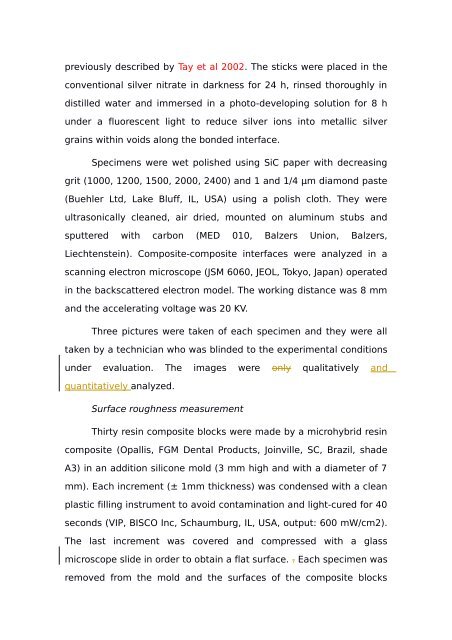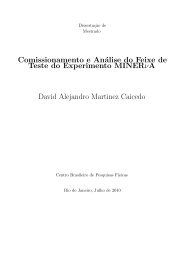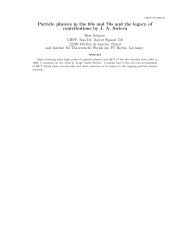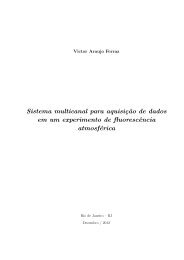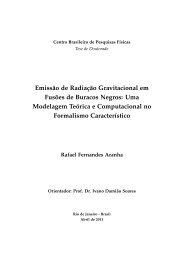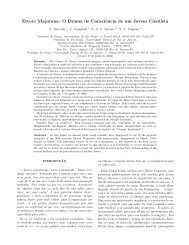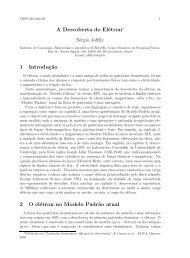Strength of composite repair using different diamond ... - Cbpfindex
Strength of composite repair using different diamond ... - Cbpfindex
Strength of composite repair using different diamond ... - Cbpfindex
Create successful ePaper yourself
Turn your PDF publications into a flip-book with our unique Google optimized e-Paper software.
previously described by Tay et al 2002. The sticks were placed in the<br />
conventional silver nitrate in darkness for 24 h, rinsed thoroughly in<br />
distilled water and immersed in a photo-developing solution for 8 h<br />
under a fluorescent light to reduce silver ions into metallic silver<br />
grains within voids along the bonded interface.<br />
Specimens were wet polished <strong>using</strong> SiC paper with decreasing<br />
grit (1000, 1200, 1500, 2000, 2400) and 1 and 1/4 µm <strong>diamond</strong> paste<br />
(Buehler Ltd, Lake Bluff, IL, USA) <strong>using</strong> a polish cloth. They were<br />
ultrasonically cleaned, air dried, mounted on aluminum stubs and<br />
sputtered with carbon (MED 010, Balzers Union, Balzers,<br />
Liechtenstein). Composite-<strong>composite</strong> interfaces were analyzed in a<br />
scanning electron microscope (JSM 6060, JEOL, Tokyo, Japan) operated<br />
in the backscattered electron model. The working distance was 8 mm<br />
and the accelerating voltage was 20 KV.<br />
Three pictures were taken <strong>of</strong> each specimen and they were all<br />
taken by a technician who was blinded to the experimental conditions<br />
under evaluation. The images were only qualitatively and<br />
quantitatively analyzed.<br />
Surface roughness measurement<br />
Thirty resin <strong>composite</strong> blocks were made by a microhybrid resin<br />
<strong>composite</strong> (Opallis, FGM Dental Products, Joinville, SC, Brazil, shade<br />
A3) in an addition silicone mold (3 mm high and with a diameter <strong>of</strong> 7<br />
mm). Each increment (± 1mm thickness) was condensed with a clean<br />
plastic filling instrument to avoid contamination and light-cured for 40<br />
seconds (VIP, BISCO Inc, Schaumburg, IL, USA, output: 600 mW/cm2).<br />
The last increment was covered and compressed with a glass<br />
microscope slide in order to obtain a flat surface. . Each specimen was<br />
removed from the mold and the surfaces <strong>of</strong> the <strong>composite</strong> blocks


